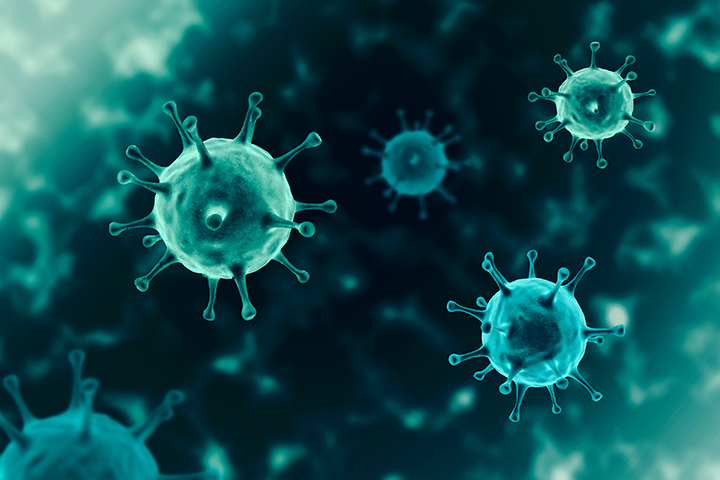In response to the increase in COVID-19 infections, the Singapore government has announced that it will take stricter measures than those announced on May 8. Period: Effective from Sunday, May 16, 2021, to Sunday, June 13, 2021
Main points
Due to the alarming increase in the number of coronary infections, the MOH has decided to ban the following from Sunday, May 16 to Sunday, June 13.
No eating or drinking in restaurants.
(Take-out and delivery are allowed.)
No more than two people allowed to gather in a public place.
Office work will be replaced by work from home.
A maximum of two visitors per day, each time with a maximum of two people (this does not apply to family members who are babysitting grandchildren). Example: Grandparents babysitting grandchildren)
No sauna, facial, voice training, or other services that cannot be masked.
The number of people allowed in malls and attractions will be reduced from 50% to 25%.
Source:
The following is a translation of MOH 6-15 above.
A) Further reduction of allowable group size
6. Further reduce the current maximum allowable group size from a maximum of five (5) to a maximum of two (2) individuals per household per day and limit the maximum of five (5) individual visitors per household per day to two (2) individual visitors per household per day. Individuals should continue to limit the total number of get-togethers to no more than two per day, whether they are with other households or with friends and family in public places.
7. (Exception) Grandchildren who are cared for daily by their grandparents do not count towards the limit of two individual visitors per household or the number of get-togethers per day. However, grandparents are strongly encouraged to get vaccinated against COVID-19 to protect both themselves and their grandchildren from COVID-19 infection. To reduce the risk of infection, grandparents should also minimize mingling between grandchildren from different households.
B) Minimize workplace interactions
8. Telecommuting will become the default in the workplace. Employers need to ensure that employees who are able to telecommute do so. There should continue to be no cross-assignment of workers to multiple work sites. Employers should continue to stagger the start times of employees who need to return to work and implement flexible working hours. Social gatherings in the workplace will be prohibited. Employees may take meal breaks in the workplace but should refrain from mingling with co-workers when removing their masks. These measures reduce the risk of infection by reducing overall foot traffic and interaction in shared spaces at or near the workplace and in public places, including public transportation.
(C) Stopping indoor “mask off” activities.
9. Recent clusters show that higher incidence and secondary infections occur in mask-off settings, homes, and restaurants. To reduce the risk of community transmission, indoor “mask off” activities such as eating F&B establishments will be suspended during this period. Other activities that will also not be permitted during this period include strenuous indoor exercise classes or strenuous individual and group indoor sports and exercise activities. In addition, individual services that require removal of the mask (such as facials and saunas), singing, and playing musical instruments that require intentional venting of air (such as wind and brass instruments) will not be permitted. These restrictions do not apply to medical and dental visits that require the patient to remove their mask. For more information, see the following paragraphs and Appendix A.
10. Food and Beverage (F&B) Discontinuation. F&B facilities where food is served are high-risk environments because clients often eat in close proximity to one another for extended periods of time while unmasked. To reduce the risk of infection in the community, F&B establishments that serve both indoor and outdoor meals (including hawker centers and food courts) can only offer take-out and delivery options.
11. Reduce activity and event size and pre-event testing requirements. Furthermore, reduce event sizes and lower event size limits to minimize the potential for large cluster formation. Pre-event testing (PET) is an important means of ensuring that participants can safely proceed with the event. For more information on PET, please refer to the MOH website.
a) Congregational and other worship services. Congregational and other worship services can continue with a reduced capacity of 50 participants at a time without PET, or up to 100 participants at a time if PET is implemented. To further reduce the risk of spread by aerosol propagation, religious workers and all other participants should wear masks at all times. Live music and performances of wind instruments will also be suspended during this period.
b) Shopping malls and showrooms. The occupancy limit for shopping malls and showrooms will be further reduced from the current gross floor area (GFA) of 10 square meters per person to 16 square meters per person. In popular malls, odd and even admission restrictions on Sundays will continue.
c) Attractions and shows. MTI’s pre-approved operating capacity for attractions will be reduced from the current allowable capacity of 50% to 25%. Indoor and outdoor shows can run with a maximum of 100 people when using PET and 50 people when not using PET.
d) Museums and public libraries. Museums and public libraries will be allowed to operate with a 25% reduced capacity.
e) Movie theaters. Movie theaters with PET implemented can accommodate up to 100 people. Without PET, only 50 people will be allowed. A typical group size of 2 people applies and no food or beverages may be sold or consumed in the cinema.
f) MICE and Live Performance. A maximum of 100 people are allowed if PET is allowed; a maximum of 50 people are allowed if PET is not used. Speakers and performers cannot be unmasked. Also, do not sing or play instruments that need to be intentionally deflated (e.g., wind or brass instruments).
g) Wedding Reception and Solemnization.
-Wedding receptions are not permitted as per the measures of the F&B establishment where the meal is to be held.
-Marriage solemnization may continue for a maximum of 100 people if PET is used and a maximum of 50 people if PET is not used.
h) Funerals. The maximum number of participants for a full day of funeral rites, including funeral and cremation, is no more than 20, instead of the current 30. Participants are reminded to keep a safe distance and wear a mask at all times to reduce the risk of infection.
Targeted support measures A) Enhanced Job Support Scheme (JSS) support for F&B companies
12. In view of the cessation of meals in F&B establishments, the Government will increase the JSS support rate to 50% of the first $4,600 of the total monthly salary paid to local employees during the period when meals are banned.
This is an increase from the 10 percent support on wages paid through June 2021.
B) One-month rental relief for hawker centers and coffee shops located in government-owned facilities.
13. In order to assist hawkers and coffee shop stalls that are self-employed and not benefiting from JSS, the Government will provide one-month rental exemption to tenants of hawkers’ stalls and coffee shops in Government premises.
Commercial landlords will be required to support F&B tenants throughout this period. Use of Face Shield
14. Studies have shown that face shields cannot replace masks in protecting the wearer from droplet infection. Studies have shown that face shields are not a substitute for masks in protecting the wearer from a droplet infection. More importantly, if the wearer becomes infected, the face shield will not adequately prevent the spread of droplets. Therefore, do not use a face shield as a substitute for wearing a mask, except in medical exceptions. Or if the child is under 12 years old. Or for married couples during the solemnization of their marriage. Expanding the testing strategy
15. The above measures will continue to be complemented by the testing, contact tracing, and vaccination capabilities that have been built over the past year to manage the spread of the community. In particular, testing is one of the key protective tools to quickly identify individuals exposed to the virus and reduce the likelihood of further spread. Active surveillance and routine testing of target groups, such as those at high risk of exposure to COVID-19, and testing of groups diagnosed with an acute respiratory infection (ARI) by COVID-19 polymerase chain reaction (PCR) testing, have enabled rapid detection of unlinked cases in the community. To ensure rapid detection of possible cases, rapid antigen testing (ART) will also be initiated for all persons presenting with ARI symptoms at Swab and Send Home (SASH) Public Health Preparedness Clinics (PHPCs), polyclinics, emergency departments, and Community Swab Centers (RSCs). This ART will be done along with the PCR test that all such patients are already undergoing. Both the ART test and the PCR test will be funded by the government for all individuals with ARI symptoms. ART is less accurate than PCR testing, and false positives and false negatives are more common, but the shorter turnaround time for ART compared to PCR testing1 allows for more rapid public health action for those who test positive for ART.
Note: Translations are approximate and Alchemist Pte Ltd is not responsible for any errors in translation.
Please check with MOH for a reliable collection of information.
For further research and field surveys, please send a job request to the following email address
info@alchemist.sg
www.alchemist.sg


